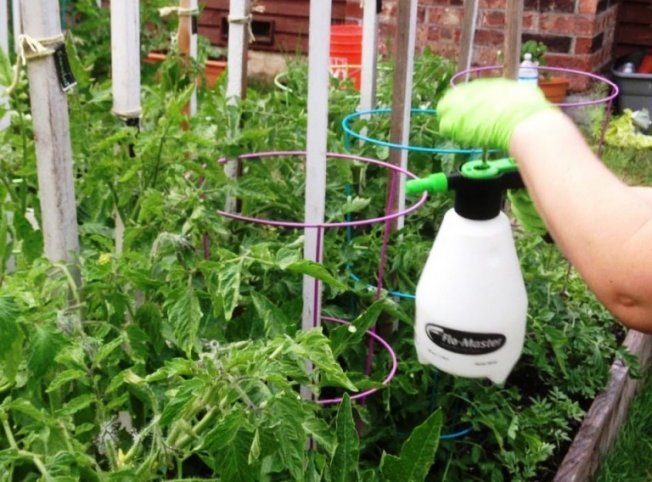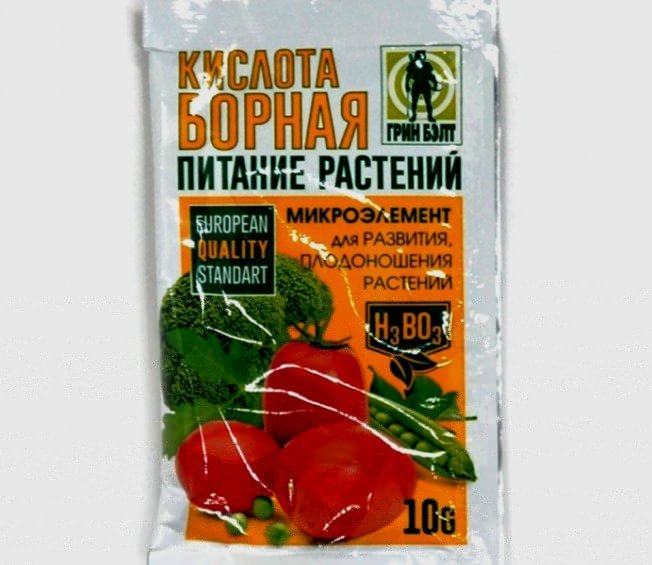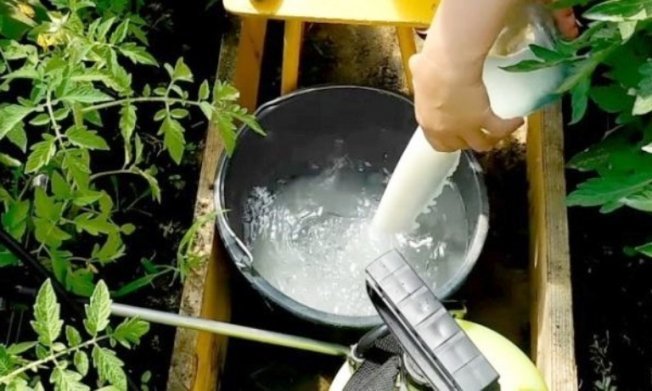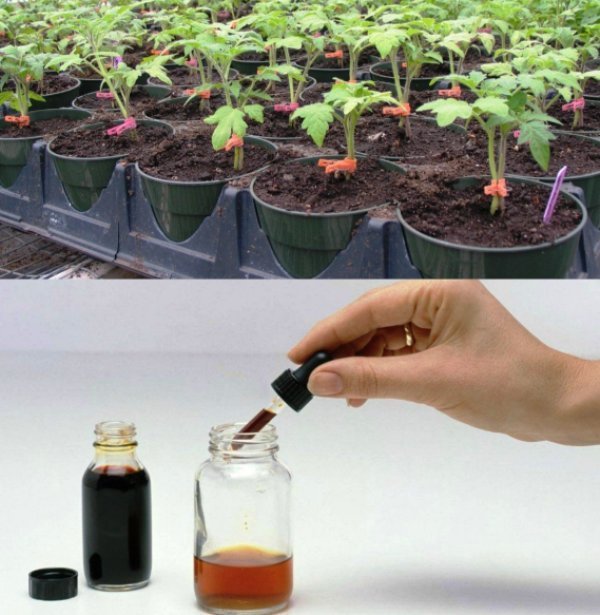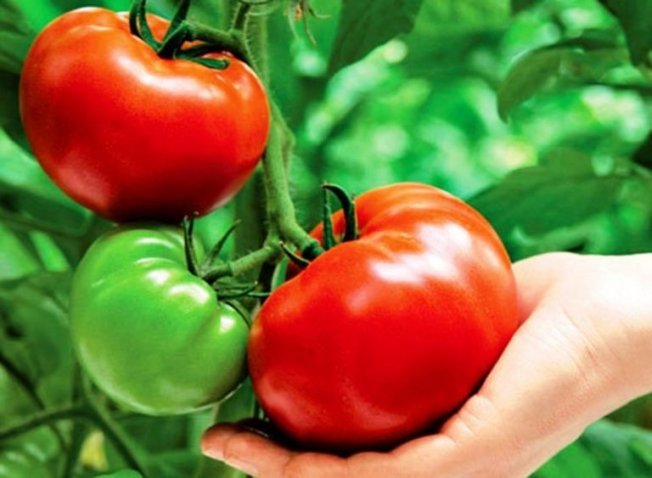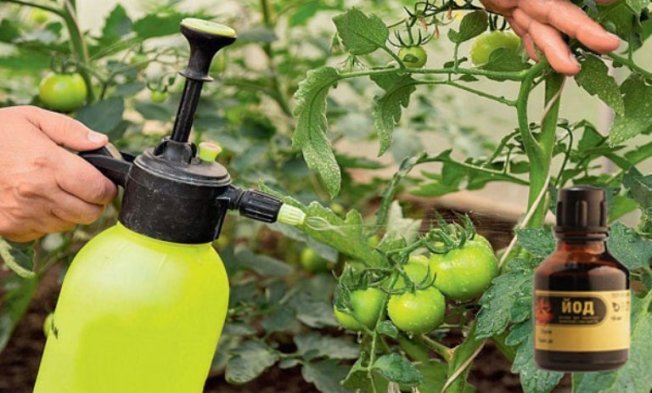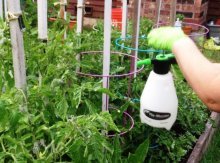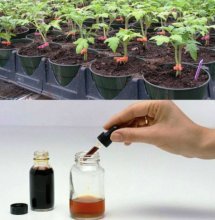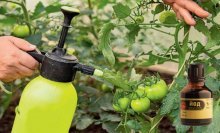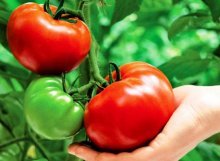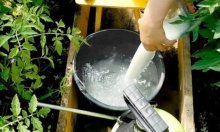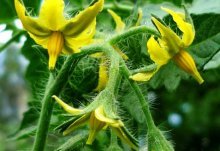Feeding tomatoes with boric acid, iodine and milk, recipes for preparing formulations, effectiveness

Folk remedies for feeding tomatoes involve providing the plants with useful elements, improving the taste of the fruit, and increasing the resistance of the bushes to common diseases. Consider one of the effective formulations, including boric acid, milk and iodine.
Content:
- What are the benefits of boric acid for tomatoes?
- Symptoms of boron deficiency
- Recipe with whey
- WITHleaving with fresh milk for foliar feeding
- A product that increases the productivity of tomatoes, lettuce peppers, cucumbers
- Feeding tomatoes with ash and boric acid
- Useful tips: how often to repeat feeding bushes
What are the benefits of boric acid for tomatoes?
Feeding tomatoes with boric acid, iodine and milk is one of the best options that allows increase plant productivity.
Boron is one of the most important components of the product for treating bushes, so let’s clarify what its usefulness is:
- Activates flowering and increases the number of ovaries.
- Increases the keeping quality of ripe fruits.
- Increases the sugar content of fruits, thereby improving their taste.
- The plant receives protection from late blight.
It has been experimentally proven that the use of boron as a fertilizer increases productivity by 25-30%.
Symptoms of boron deficiency
Boron is needed by the plant for the following reasons:
- it improves the process of calcium absorption;
- activates the respiratory function of the root system;
- stimulates the synthesis of biologically active substances.
An experienced gardener determines the deficiency of an element by the following signs:
- the top of the plant begins to dry out, the leaves curl, but at the same time the growth of side shoots continues;
- there is lightening and deformation of the leaves;
- dry spots form on ripening fruits;
- There are fewer flowers, and the number of barren flowers increases.
Tomatoes can also drop flowers.
Let us immediately note that tomatoes can be fed with boric acid and iodine, and milk, and ash, and potassium permanganate in different combinations.
Beginning gardeners will find it useful to familiarize themselves with several simple but effective recipes.
Let's watch a video about the benefits of boron for plants:
Recipe with whey
A whey solution creates a protective film on tomato leaves that can prevent the development diseases, in particular late blight. To increase the effectiveness of the product, iodine and boron are added to the recipe.
The composition can be used not only for foliar, but also for root feeding.
Procedure for preparing the drug:
- boric acid in the amount of 0.5 teaspoon is mixed with 100 g of hot water, you need to wait for complete dissolution and cooling;
- add 1 liter of fermented milk or whey, 18-20 drops of iodine;
- dilute in 4 liters of settled water, mix thoroughly.
The product is suitable for processing tomatoes in greenhouses and outdoor beds.
If the product is used for watering, then it is recommended to use 0.5 liters of fertilizer for each bush; before application, the bushes are watered generously with warm, settled water.
Composition with fresh milk for foliar feeding
Feeding tomatoes with milk, iodine and boric acid can be done using fresh milk, and the product can be taken of any fat content.
To get 10 liters of feeding composition, mix thoroughly:
- 9 liters of settled water;
- 1 liter of cow's milk;
- boric acid, 0.5 teaspoon, dissolved in hot water;
- 10 drops of iodine.
Treatment with such a mixture is useful for plants grown in open ground, in particular if the air temperature is not stable and there is too much precipitation.
Boric acid protects fruits from rotting due to excess moisture and prevents flowers from falling off. In addition, fruit ripening is accelerated.
A product that increases the productivity of tomatoes, lettuce peppers, cucumbers
The miraculous solution is prepared with the same ingredients as in the previous recipe, but potassium permanganate, which is a good potassium fertilizer, is additionally added to it.
The antiseptic properties of potassium permanganate will provide plants with additional protection against fungal infections.
Boron will slightly prolong the flowering period, which will lead to the formation of more ovaries.
Proportions of the composition for the ovary:
- potassium permanganate dissolved in 10 liters of water until pale pink;
- 0.5 teaspoons of boric acid;
- 10 drops of iodine;
- 250 g fresh milk;
- 50 ml of humate solution, choose the product Gumat, or Gumat + 7, dilute them in accordance with the instructions.
A small amount of potassium permanganate should be diluted in a small jar and make sure that there are no undissolved crystals left.
Mix all components thoroughly and use for spraying vegetable crops.
We carry out treatments in the evening or early in the morning, when the sun is not yet active. The frequency of treatments is 3, throughout the entire season.
Let's watch a useful video about how feeding tomatoes with milk, iodine, milk, humate, and potassium permanganate works:
Feeding tomatoes with ash and boric acid
Summer residents claim that the most noticeable result is obtained by foliar feeding of tomatoes with a cocktail prepared as follows:
- Add 2 liter jars of ash obtained from burning wood to a 10 liter bucket of water and bring to a boil;
- dissolve 1 teaspoon of boric acid in a liquid that has cooled to +50 C;
- after cooling, add 10 drops of iodine.
Fertilizer is applied at the root, approximately 0.5 liters for each bush. But you can spray tomato bushes with a spray bottle.
Useful tips: how often to repeat feeding bushes
Despite all the usefulness of fertilizing tomatoes with boric acid with iodine and milk, it is not recommended to overuse them; only three of them are carried out per season:
- in the process of the bush gaining green mass, before flowering;
- during flowering;
- during fruit set.
Experienced vegetable growers note that foliar fertilizing with boron is more effective than watering.
An excess of boron can lead to the appearance of dry spots on the leaves and their curling. During flowering, the element can cause pollen combustion, which will negatively affect the number of ovaries.
The break between feedings should be at least 10-12 days.
It should be remembered that boron crystals dissolve at temperatures from +50 C to +70 C. The solution should not be prepared in advance, as over time it loses its beneficial properties.
For processing plants, it is better to choose dry, windless weather.
The best time for spraying is evening. Leaves are processed on both sides.
Feeding tomatoes with boric acid, iodine and milk is a fairly effective means of increasing productivity and protecting plants from late blight. When preparing formulations and processing bushes, care should be taken, otherwise there is a risk of burning the leaves. If you follow all the rules, tomatoes will delight you with an excellent harvest.

